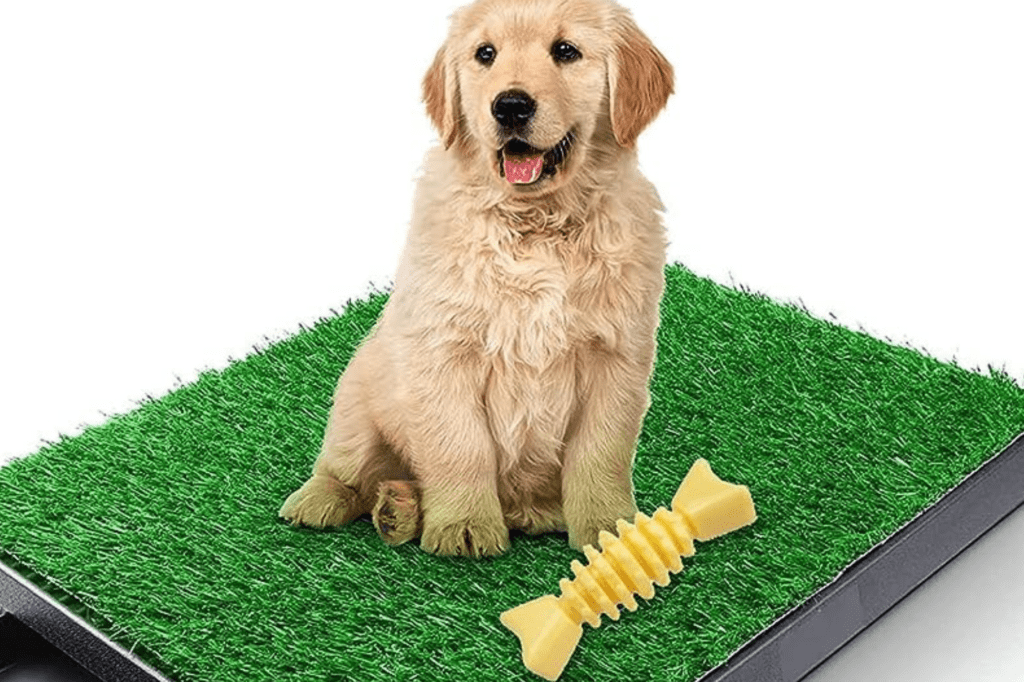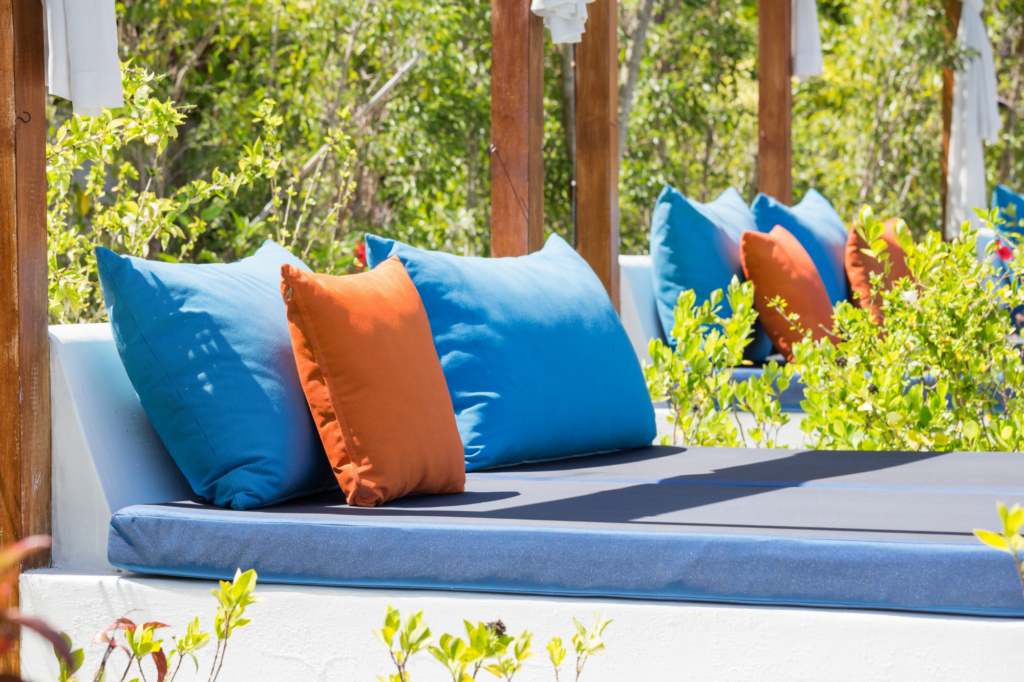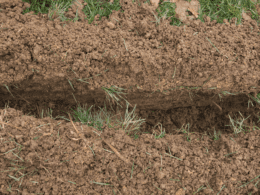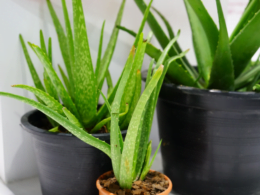Are you tired of your furry friend leaving their mark on your outdoor furniture?
Keeping dogs from peeing on your precious outdoor furniture can be a challenging task, but fear not! With a few simple steps, you can create a safe and pee-free environment for both you and your canine companion.
Understanding the reasons behind this behavior is the first step. Next, designating a specific bathroom area and regularly cleaning and removing odors will help deter your dog from using your furniture as a toilet.
Additionally, using deterrents and repellents, providing adequate bathroom breaks and exercise, and considering behavioral training or professional consultation will further reinforce positive habits. Using protective covers or furniture barriers can also help safeguard your furniture.
Lastly, providing adequate mental stimulation and distractions will keep your pup entertained and less likely to pee where they shouldn’t.
Follow these tips to ensure a pee-free outdoor oasis for everyone to enjoy!
Quick Summary
- Establish clear boundaries and provide designated areas to address territorial marking.
- Sufficient exercise and mental stimulation can discourage attention-seeking behavior.
- Address anxiety through desensitization techniques.
- Create a designated bathroom area and consistently train the dog to use it.
Understand the Reasons Behind the Behavior
To prevent your dog from peeing on your outdoor furniture, you need to understand why they’re doing it in the first place. Understanding dog psychology is key in addressing this issue.
Dogs may urinate on furniture for various reasons, such as marking their territory, seeking attention, or experiencing anxiety. By identifying the underlying cause, you can implement effective training techniques to modify their behavior.
Firstly, marking their territory is a natural instinct for dogs. They use urine to establish boundaries and communicate with other animals. If your dog is peeing on your outdoor furniture, it may be their way of claiming it as their territory. To address this, establish clear boundaries and provide designated areas for them to relieve themselves, such as a specific spot in the yard or a pee pad.
Secondly, some dogs may pee on furniture to seek attention. They may have learned that urinating on the furniture results in a reaction from their owners, even if it’s negative attention. To discourage this behavior, ensure your dog receives sufficient exercise and mental stimulation. Engage in regular playtime and provide positive reinforcement when they exhibit appropriate behavior.
Lastly, anxiety can also contribute to peeing on furniture. Dogs may urinate as a response to stressful situations or separation anxiety. It’s important to address their anxiety through desensitization techniques, such as gradually exposing them to the triggers and providing a safe and comforting environment.
By understanding the reasons behind your dog’s behavior and implementing effective training techniques, you can prevent them from peeing on your outdoor furniture and create a safe and comfortable environment for both you and your furry friend.
Create a Designated Bathroom Area
If you want to create a designated bathroom area for your dog, there are a few key points to consider.
First, you can use pee pads or artificial grass to provide a convenient spot for your dog to relieve themselves.
Secondly, it’s important to train your dog to use a specific spot by consistently taking them to that location when it’s time to go.
Lastly, installing a doggy door can make it easy for your dog to access the designated bathroom area whenever they need to.
Use Pee Pads or Artificial Grass
Place some pee pads or artificial grass in an easily accessible area, so your furry friend has a designated spot to do their business and avoid your outdoor furniture. These pee pad alternatives provide a safe and convenient solution for keeping your outdoor furniture clean.
By having a designated bathroom area for your dog, you can prevent accidents and protect your furniture from unwanted messes. Additionally, you can consider using natural deterrents to further discourage your dog from peeing on your furniture. For example, you can sprinkle lemon juice or vinegar around the furniture, as dogs typically dislike the smell of these substances.
Remember to consistently reinforce the designated bathroom area and reward your dog for using it, as positive reinforcement is key in training them to avoid peeing on your outdoor furniture.
Train Your Dog to Use a Specific Spot
Choose a specific area and train your furry friend to use it for their bathroom needs, creating a sense of routine and consistency that will help protect your precious outdoor space.
Here are four steps to successfully train your dog to use a specific spot:
- Pick a designated area: Select a spot in your yard that is easily accessible and away from your outdoor furniture. This will help establish a clear boundary for your dog’s bathroom activities.
- Use teaching commands: Introduce specific commands like ‘go potty’ or ‘do your business’ when you take your dog to the designated area. Consistently use these commands to reinforce the association between the spot and the act of eliminating.
- Reward system: Praise and reward your dog with treats or verbal affirmations immediately after they use the designated spot. This positive reinforcement will motivate them to continue using it.
- Consistency is key: Be patient and consistent with the training process. Take your dog to the designated spot at regular intervals throughout the day, especially after meals or playtime.
By following these steps, you can teach your dog to use a specific spot, keeping them away from your outdoor furniture and maintaining a clean and safe environment for everyone.
Install a Doggy Door for Easy Access
Installing a doggy door allows your furry friend to easily access the outdoors, promoting independence and convenience for both you and your pet. Doggy door installation is a great solution to prevent your dog from peeing on your outdoor furniture. By giving your dog the freedom to go outside whenever they need to relieve themselves, you can minimize accidents inside the house. This not only saves you from the hassle of constantly cleaning up after your pet, but it also reduces the risk of your dog developing urinary tract infections or discomfort from holding it in for too long.
Additionally, doggy doors provide a safe way for your dog to go outside and explore, which is essential for their mental and physical well-being. With the benefits of doggy doors, you can ensure a happy and accident-free environment for both you and your furry companion.
Clean and Remove Odors
To effectively clean and remove odors from your outdoor furniture, there are three key points to keep in mind. First, use enzymatic cleaners as they’re specifically designed to break down and eliminate pet odors. Second, avoid ammonia-based cleaners as the scent can actually attract dogs to the area and encourage them to urinate there again. Lastly, make sure to regularly wash cushion covers and fabrics to prevent any lingering smells and keep your outdoor furniture fresh and odor-free.
Use Enzymatic Cleaners
One effective way to prevent dogs from peeing on your outdoor furniture is by using enzymatic cleaners. These cleaners can effectively eliminate lingering odors and deter them from marking their territory.
Here are five reasons why using enzymatic cleaners is important in preventing dogs from peeing on your outdoor furniture:
- They break down the urine at a molecular level, removing the scent completely.
- Enzymatic cleaners discourage dogs from marking their territory in the same spot again.
- Consistently using enzymatic cleaners helps reinforce proper bathroom habits in dogs.
- These cleaners are safe to use on various outdoor furniture materials, ensuring their longevity.
- By eliminating odors, enzymatic cleaners create a safe and inviting space for both humans and dogs.
Remember, using enzymatic cleaners to prevent dogs from peeing on outdoor furniture requires consistency in training. So, make sure to use these cleaners regularly to maintain a pee-free outdoor furniture area.
Avoid Ammonia-Based Cleaners
Avoiding ammonia-based cleaners is crucial when it comes to maintaining a pee-free outdoor furniture area for your furry friends. Ammonia-based cleaners contain a chemical compound that resembles urine, which can actually attract dogs to mark their territory on your furniture.
To prevent this, it’s important to understand urine marking. Dogs use their urine to communicate and claim their space, so it’s vital to remove any odor that could encourage them to repeat the behavior. Instead of ammonia-based cleaners, opt for natural deterrents like citrus sprays or vinegar solutions. These scents are unpleasant to dogs and will help discourage them from peeing on your furniture.
By using natural deterrence and avoiding ammonia-based cleaners, you can create a safe and pee-free environment for your beloved pets.
Regularly Wash Cushion Covers and Fabrics
Ensure that you regularly wash the cushion covers and fabrics to maintain a pristine and odor-free environment for your furry companions. Dogs have a natural instinct to mark their territory, and if they detect any lingering scent on your outdoor furniture, they may be tempted to urinate on it. By keeping the cushion covers and fabrics clean, you eliminate any scent that may attract them.
Additionally, washing these items regularly will help prevent the buildup of bacteria and germs that can cause unpleasant odors. It’s important to understand that dogs may mark their territory due to anxiety, stress, or the presence of other animals. To prevent marking behavior, provide your dogs with a comfortable and secure environment, and consider using deterrent sprays or training techniques.
Regularly washing your cushion covers and fabrics is an essential step in maintaining a clean and urine-free outdoor furniture area for your beloved pets.
Use Deterrents and Repellents
If you’re looking for ways to keep your dog from peeing on your outdoor furniture, there are several deterrents and repellents you can try.
One option is to use citrus or vinegar sprays, as the strong scent can help deter your dog from marking their territory.
Another option is bitter apple spray, which has a bitter taste that dogs tend to dislike.
Lastly, you can consider motion-activated sprinklers or alarms, which can startle your dog and discourage them from approaching your furniture.
Citrus or Vinegar Sprays
Try using citrus or vinegar sprays to keep your outdoor furniture smelling fresh and free from any unwanted doggy accidents. These natural alternatives act as training aids to deter your furry friend from peeing on your precious outdoor furniture.
Here are five reasons why you should consider using citrus or vinegar sprays:
- They’re safe for both dogs and humans, ensuring the well-being of everyone around.
- The strong scent of citrus or vinegar repels dogs, discouraging them from marking their territory.
- They’re easy to make at home, saving you money and reducing your carbon footprint.
- Citrus or vinegar sprays are non-toxic and environmentally friendly, providing a safe and sustainable solution.
- By using these sprays, you can protect your outdoor furniture from urine stains and unpleasant odors, keeping your space clean and enjoyable for everyone.
Bitter Apple Spray
To deter your furry friend from marking their territory on your precious outdoor furniture, consider using bitter apple spray. It’s a safe and effective solution that will keep your space clean and enjoyable for everyone.
Bitter apple spray is a popular choice among pet owners who are looking for natural deterrents to keep their dogs away from their furniture. This spray contains a bitter taste that dogs find unpleasant, discouraging them from chewing or marking on your outdoor furniture. The best part is that bitter apple spray is safe for dogs and doesn’t harm them in any way.
In addition to bitter apple spray, there are also other bitter apple alternatives available in the market, such as citrus or vinegar sprays. These can also be effective in deterring dogs from peeing on your outdoor furniture.
Motion-Activated Sprinklers or Alarms
Now that you know about the effectiveness of Bitter Apple Spray, let’s explore another method to keep dogs from peeing on your outdoor furniture: motion-activated sprinklers or alarms. These devices are designed to deter dogs by surprising them with a burst of water or a loud noise when they approach your furniture. They work by detecting motion through sensors and activating a response.
Using motion-activated sprinklers or alarms can be an effective way to prevent dogs from marking their territory on your outdoor furniture. The sudden burst of water or loud noise startles the dog and teaches them that your furniture is off-limits. However, it’s important to consider the pros and cons before investing in these deterrents.
To help you make an informed decision, here is a table comparing the effectiveness, alternatives, and pros and cons of using motion-activated sprinklers or alarms:
| Effectiveness | Alternatives | Pros and Cons | |
|---|---|---|---|
| Motion-Activated Sprinklers | Effective in deterring dogs from approaching furniture | Alternatives include citronella sprays or ultrasonic devices | Pros: Provides a physical deterrent, easy to set up. Cons: Requires water source, may startle other animals or people. |
| Motion-Activated Alarms | Effective in scaring dogs away with a loud noise | Alternatives include motion-activated lights or pet-friendly repellents | Pros: No water source needed, can be used indoors or outdoors. Cons: May disturb neighbors, may desensitize dogs over time. |
Remember, the goal is to find a method that suits your preferences and keeps your outdoor furniture safe from unwanted dog markings.
Provide Adequate Bathroom Breaks and Exercise
Make sure you give your furry friend plenty of bathroom breaks and exercise to keep them from using your outdoor furniture as their personal restroom. Understanding the importance of providing adequate bathroom breaks and exercise is key in preventing your dog from peeing on your precious outdoor furniture.
Dogs, just like humans, need regular opportunities to relieve themselves. By establishing a routine, you can ensure that your dog knows when and where they’re allowed to go to the bathroom. Start by taking your dog out for bathroom breaks first thing in the morning, after meals, and before bedtime. This routine will help them understand that there are designated times for bathroom breaks.
Additionally, make sure to provide plenty of exercise for your dog. A tired dog is less likely to have the energy or desire to mark their territory on your outdoor furniture. Regular exercise not only tires them out physically but also mentally, reducing their urge to mark their territory. Engage in activities such as playing fetch, going for walks, or even setting up an obstacle course in your backyard.
Keeping your furry friend active and engaged will not only prevent them from peeing on your outdoor furniture but also contribute to their overall well-being. Remember, a happy and well-exercised dog is a well-behaved dog.
Consider Behavioral Training or Consult a Professional
If you’re struggling with behavioral issues such as your dog peeing on your outdoor furniture, consider using positive reinforcement techniques to address the problem. This involves rewarding your dog for good behavior and redirecting them away from inappropriate actions.
Additionally, it’s important to address any underlying behavioral issues that may be causing the problem, such as anxiety or territorial marking. If you’re unsure how to proceed, it’s a good idea to seek help from a certified dog trainer or behaviorist who can provide expert guidance and support.
Positive Reinforcement Techniques
One effective way to discourage dogs from peeing on your outdoor furniture is by using positive reinforcement techniques. Here are four steps to help you reinforce good behavior and create a safe environment for your pets:
- Understand Rewards: Dogs respond well to positive reinforcement, so it’s important to reward them when they exhibit the desired behavior. Use treats, praise, or playtime to motivate and encourage them.
- Consistency is Key: Be consistent with your training and rewards. Dogs thrive on routine and will quickly learn what is expected of them. Reinforce good behavior every time you see it.
- Redirect Their Attention: If you catch your dog about to pee on your furniture, redirect their attention to an appropriate spot, like a designated potty area. Reward them for going in the right place.
- Use Deterrents: Consider using deterrent sprays or barriers on your outdoor furniture. These products have smells that dogs find unpleasant, deterring them from peeing on the furniture.
By understanding rewards and reinforcing good behavior, you can effectively train your dog to avoid peeing on your outdoor furniture and create a safe and clean space for everyone.
Address Underlying Behavioral Issues
To address underlying behavioral issues, it’s crucial to identify the root causes and provide proper training and guidance for your furry companions. Understanding triggers is key in preventing dogs from peeing on outdoor furniture. Is it due to anxiety, territorial marking, or lack of proper potty training? Once you determine the trigger, you can work on addressing it.
Offering rewards for positive behavior is another effective approach. When your dog goes to the bathroom in the appropriate spot, praise and reward them with treats or verbal affirmations. Consistency is key in reinforcing positive habits.
Additionally, providing your dog with plenty of opportunities for exercise and mental stimulation can help reduce unwanted behaviors. By understanding the triggers and offering rewards for positive behavior, you can successfully address underlying behavioral issues and keep your outdoor furniture pee-free.
Seek Help from a Certified Dog Trainer or Behaviorist
Now that you’ve addressed any underlying behavioral issues that may be causing your dog to pee on your outdoor furniture, it’s time to seek help from a certified dog trainer or behaviorist.
These professionals have the knowledge and experience to provide you with specific guidance tailored to your dog’s needs. They can help you understand why your dog is behaving this way and develop a personalized training plan to prevent it from happening again.
A certified dog trainer can teach you techniques to redirect your dog’s behavior and reinforce positive habits. A behaviorist consultation can provide valuable insights into your dog’s psychology and help you create a safe and comfortable environment for both you and your furry friend.
With the expertise of these professionals, you can gain the tools and knowledge necessary to keep your outdoor furniture pee-free.
By seeking help from a certified dog trainer or behaviorist, you can:
- Gain a deeper understanding of your dog’s behavior
- Develop effective training techniques tailored to your dog’s specific needs
- Create a safe and comfortable environment for you and your dog
Use Protective Covers or Furniture Barriers
Using protective covers or furniture barriers can help prevent your beloved furry friend from leaving their mark on your outdoor furniture, saving you from the frustration and disappointment of finding unwanted surprises. By employing these simple yet effective solutions, you can maintain the cleanliness and integrity of your outdoor furniture while keeping your dog happy and comfortable.
One option for protecting your furniture is to use pet-friendly deterrents. These products are specifically designed to repel dogs from certain areas, making them an excellent choice for keeping your furniture urine-free. Look for deterrents that are safe for both pets and humans, ensuring that they won’t cause any harm or discomfort to your furry friend.
Another alternative is to provide your dog with alternative outdoor bathroom options. By creating a designated area for them to relieve themselves, you can redirect their attention away from your furniture. Consider installing a doggy potty patch or a designated gravel area in your yard. These options provide a more suitable and acceptable place for your dog to do their business, reducing the likelihood of accidents on your outdoor furniture.
To help you understand the benefits of using protective covers or furniture barriers, here is a table that compares these two options:
| Protective Covers | Furniture Barriers |
|---|---|
| Provide a physical barrier between your dog and the furniture | Prevent your dog from accessing the furniture altogether |
| Can be easily removed and cleaned | Require more effort to install and maintain |
| Come in a variety of sizes and materials | May require additional training for your dog to respect the barrier |
| Can be used indoors and outdoors | Can be more visually intrusive |
By implementing these measures, you can ensure the safety of your dog while preserving the longevity of your outdoor furniture. Remember, a little prevention can go a long way in maintaining a harmonious and clean living environment for both you and your furry companion.
Provide Adequate Mental Stimulation and Distractions
Make sure to provide your furry friend with plenty of mental stimulation and distractions to keep them entertained and prevent any unwanted behaviors. Dogs are intelligent creatures that require mental exercise just as much as physical exercise.
One effective way to keep your dog from peeing on your outdoor furniture is by investing in dog puzzle toys. These toys are designed to challenge your dog’s mind and keep them engaged for hours. They usually involve hiding treats or food inside a puzzle that your dog has to figure out how to solve in order to get to the reward. Not only will this keep your dog mentally stimulated, but it will also redirect their attention away from your furniture.
In addition to puzzle toys, interactive play is another great way to keep your dog entertained and prevent them from peeing on your outdoor furniture. Playing games like fetch or tug-of-war with your dog not only provide physical exercise but also mental stimulation. It keeps their mind focused on the game and helps release any pent-up energy. Interactive play also strengthens the bond between you and your furry friend, making them less likely to engage in destructive behaviors.
So, make sure to set aside time each day for playtime with your dog to keep them happy, healthy, and away from your furniture.
Frequently Asked Questions
How can I potty train my dog to only go in the designated bathroom area?
To potty train your dog to only go in the designated bathroom area, follow these potty training tips and housebreaking methods. Consistency, positive reinforcement, and frequent bathroom breaks will help ensure the safety of your home and outdoor furniture.
What are some effective deterrents or repellents to keep dogs away from my outdoor furniture?
To keep dogs away from your outdoor furniture, use dog repellents and employ effective training techniques. These deterrents and training methods will help ensure the safety of both your furniture and your furry friends.
How often should I provide bathroom breaks and exercise for my dog?
To ensure your dog’s well-being and prevent accidents, provide bathroom breaks every 2-4 hours. Engage your furry friend in daily exercise sessions lasting 30-60 minutes, promoting their physical and mental health.
What are some behavioral training techniques I can use to prevent my dog from peeing on outdoor furniture?
To prevent your dog from peeing on outdoor furniture, use positive reinforcement and behavioral training techniques. Reward your dog for going in designated areas and redirect them if they show signs of wanting to pee elsewhere.
Are there any specific types of protective covers or furniture barriers that work best for keeping dogs off outdoor furniture?
To protect your outdoor furniture from dogs, use protective covers or furniture barriers. These are effective in keeping dogs off your furniture, ensuring its safety and longevity.
Conclusion
In conclusion, keeping your dogs from peeing on your outdoor furniture requires understanding their behavior and providing them with a designated bathroom area.
Regular cleaning and removal of odors, along with the use of deterrents and repellents, can also help. Ensuring that your dogs have adequate bathroom breaks and exercise, as well as considering behavioral training or seeking professional advice, is crucial.
Additionally, using protective covers or furniture barriers, and providing mental stimulation and distractions, can contribute to preventing this unwanted behavior. By implementing these strategies, you can enjoy your outdoor furniture without worrying about your dogs marking their territory.










